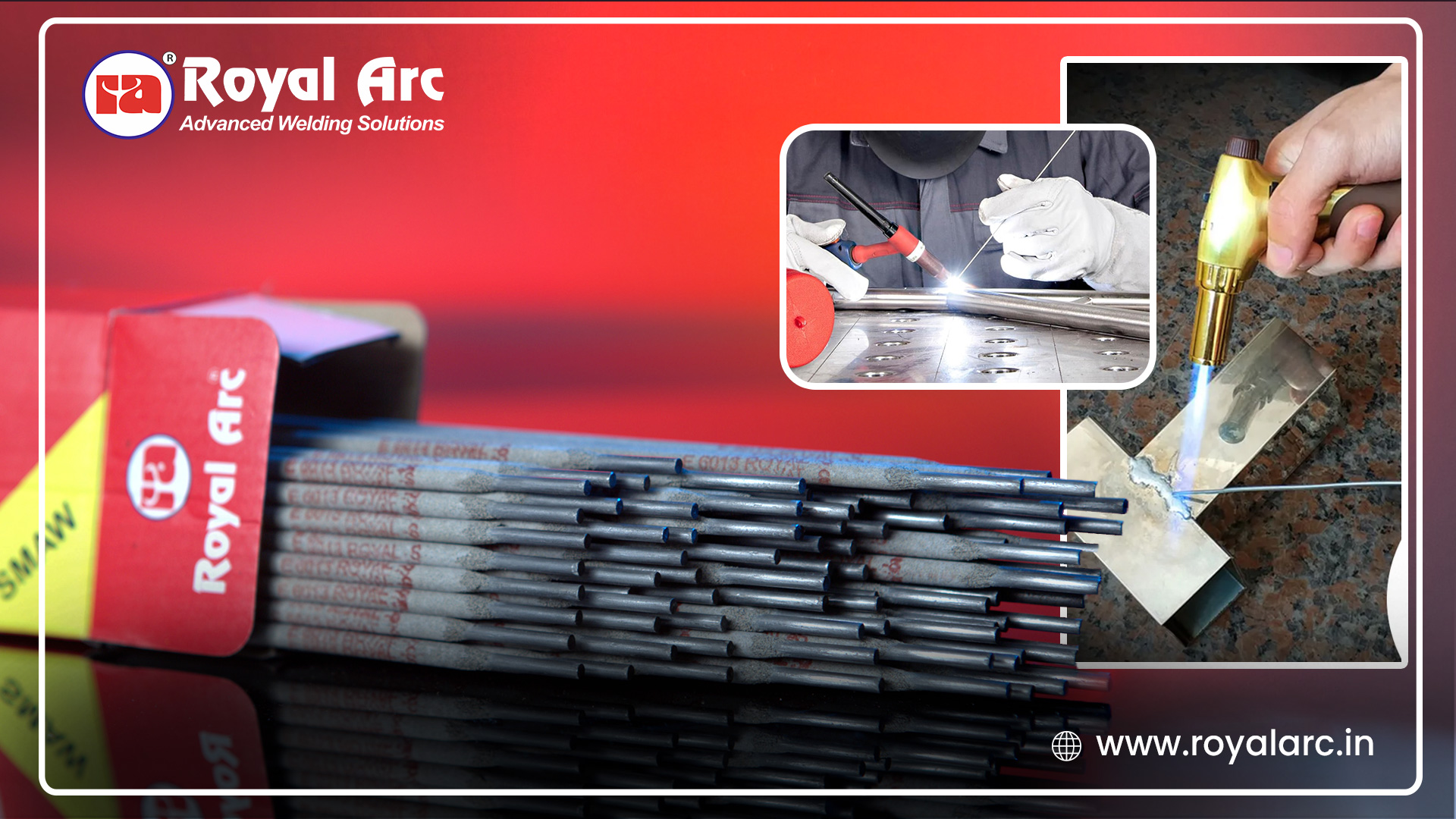Welding Rod Types: What Are They And Their Various Uses?
Welding technology has revolutionised modern industries and manufacturing processes. One of the most versatile elements in this field is the welding rod, also known as a welding electrode. The rod's adaptability and usefulness across various applications make it a pivotal player in joining a wide array of metals in welding.
In this blog, we will discuss in detail the types of welding rods, their features and the use of welding electrodes. So, let's move on to the main topic:

What is a Welding Rod?
A welding rod is an important part of the welding process. It is a metal rod or wire that joins two metal pieces. The metal is heated and melted through the welding rod, creating a strong and durable joint. The choice of a welding rod depends on your welding process and the type of material.
Types of Welding Rods
There are different types of welding rods. Welding rods are selected based on the requirements of your project, metal type and welding technique. Let's know about welding rod types:
1. Consumable Electrodes
Consumable electrode welding rods act as a filler material between the metals being joined by melting during welding. They can be mainly divided into two categories:
SMAW (Shielded Metal Arc Welding)
SMAW Welding rods are coated with flux, which protects the metal from oxidation in the welding process. They are mainly used in pipelines, bridges and heavy structures.
GMAW (Gas Metal Arc Welding)
GMAW, also known as MIG (Metal Inert Gas) welding, uses the rod as a continuous wire. It is suitable for fast and effective welding in the automotive and construction industries.
2. Non-Consumable Electrodes
Non-consumable electrodes don't melt during welding. They only create an arc and heat the welding area. The most common type is the tungsten electrode, which is used in TIG (Tungsten Inert Gas) welding. It is typically used in areas where weld quality and accuracy are important, such as the aerospace and petrochemical industries.
3. Bare Electrodes
Bare electrodes are simple metal electrodes without any coating. It is used in those works where no kind of flux is required in welding. These rods are generally suitable for light and clean welding. They are mainly used in small repairs and machine maintenance.
4. Coated Electrodes
Coated electrodes have a thin layer of flux on them, which is a chemical compound that protects the metal during the welding process. Flux prevents oxidation of the weld and forms a protective layer. They are suitable for a variety of welding positions like vertical and horizontal. Coated electrodes are used in large construction works, bridge construction and heavy machinery.
5. Flux-Cored Electrodes
These electrodes are empty from the inside and filled with flux. Flux-cored Wire electrodes provide additional safety and stability for welding. They can be used with CO2 or other gases. They are generally used in shipbuilding and pipeline projects.
6. Stainless Steel Electrodes
These electrodes are used for stainless steel welding. Stainless Steel Electrodes help make corrosion-resistant, high-quality welds. They are mainly used in the food, chemical plants, and marine industries.
7. High-Heat Resistant Electrodes
These electrodes are specially designed for situations where the weld has to resist extreme heat, such as in power generation, boiler manufacturing, and high-temperature equipment like furnaces and kilns. They maintain their structure and strength. High-Heat Resistant Electrodes are mainly used in these industries.
Uses of Welding Rods
1. Construction Industry
Welding rods are indispensable in the construction sector, where they are used extensively to build bridges, structures, and buildings. Notably, E6013 and E7018 welding rods are used extensively in this industry.
2. Automotive Industry
The automotive sector relies heavily on welding rods to join parts and bodies. TIG and MIG welding rods are particularly popular in this industry.
3. Aerospace Industries
The aerospace industry demands lightweight yet robust welding, which requires special non-ferrous and TIG welding rods.
4. Petrochemical Industry
Stainless steel welding rods and flux-cored welding rods are used to weld pipelines and tanks. These rods are the best solution because of their high temperature and chemical resistance.
5. Shipbuilding Industry
Rods used in shipbuilding such as flux-cored welding rods and submerged arc welding rods are suitable for strong water-tight welding.
6. Energy Production
Stainless steel and submerged arc welding rods are used more in power plants and renewable energy projects.
7. Food and Beverage Industry
Stainless steel welding rods are mainly used in the Food and Beverage Industry. They make the welding joints completely hygienic and corrosion-resistant.
8. Pipeline Industry
Oil and gas pipelines use cast iron and flux-cored welding rods, which can withstand high pressure and temperature.
Tips for Selecting Welding Rods
Metal Compatibility: Choose the welding rod according to the metal you want to weld.
Understanding the welding process is crucial; it's the process: the right welding rods. This knowledge enables you to make informed decisions, ensuring the success of your welding project.
Thickness and Size: Correct welding rod size and thickness improve welding performance.
Performance requirements: Select a suitable welding rod for high temperature and pressure.
Conclusion
Welding rods are not just materials, they are the backbone of every successful welding project. Choosing the right rod is the key to ensuring the quality and durability of your welding. Whether it's the construction industry, the automotive sector, or the plumbing industry, the right use of welding electrodes guarantees a job well done.
Royal Arc is a leading manufacturer of welding rods and wires in India. Our high-quality products are designed to meet every type of welding requirement.

